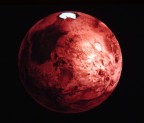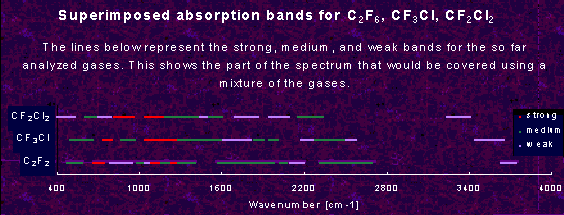 |
Swimming is probably the only sport that will be the same on a terraformed Mars as it is on Earth, since it is not dependent on gravity, but only on the viscosity of water. |
 |
 |
Swimming is probably the only sport that will be the same on a terraformed Mars as it is on Earth, since it is not dependent on gravity, but only on the viscosity of water. |
 |
Margarita Marinova and Katie Strong: NASA Ames Research Center 1999 Summer Students.
Today's Mars is too cold and its atmosphere is too thin to sustain Earth life. In the process of ecopoiesis, then, the first step should be to warm up Mars.
The current martian atmosphere is very thin and does no provide good insulation to the planet - very little solar energy is retained in the atmosphere. A demonstrated method of warming up a planet is by using super-greenhouse gases. These artificially made gases trap the radiation the solar energy, and thereby increase the surface temperature.
Super-greenhouse gases are useful for a number of reasons: they are very efficient and even at a concentration of only a few parts per million will warm up the planet significantly, they are non-toxic, have long lifetimes, they can be easily made on the Martian surface, and can keep Mars warm even with a nitrogen-oxygen atmosphere.
Keeping in mind the above characteristic, the best greenhouse gases are SF6 and perfluorocarbons (PFCs). PFCs are composed only of carbon and fluorine. Unlike CFC (cholofluorocarbons), PFCs do not destroy the ozone layer.
In this study, the transmission spectra of a number of super-greenhouse gases were studied, and their specific absorption bands quantitatively assessed in order to accurately calculate the greenhouse warming of Mars, given different mixtures and concentrations of the gases.

CONTENTS
Example Analysis - check here for a comprehensive overview of the
analysis done thus far.
More data is required for a comprehensive study of the greenhouse
warming and the terraforming of Mars. If you are able to
contribute transmission spectra for any of the following gases,
please see this page.
Analysis for Different
SF6
CF4
C2F6
Analysis available
CF2Cl2 Analysis
available
CF3Cl Analysis
available
C3F8
C4F10
C5F12
C6F14
N2O
NH4
CH4
CF3Br
Theory and Procedure <Coming Soon>
Web page design: Katie Strong
Data Analysis: Margarita
Marinova